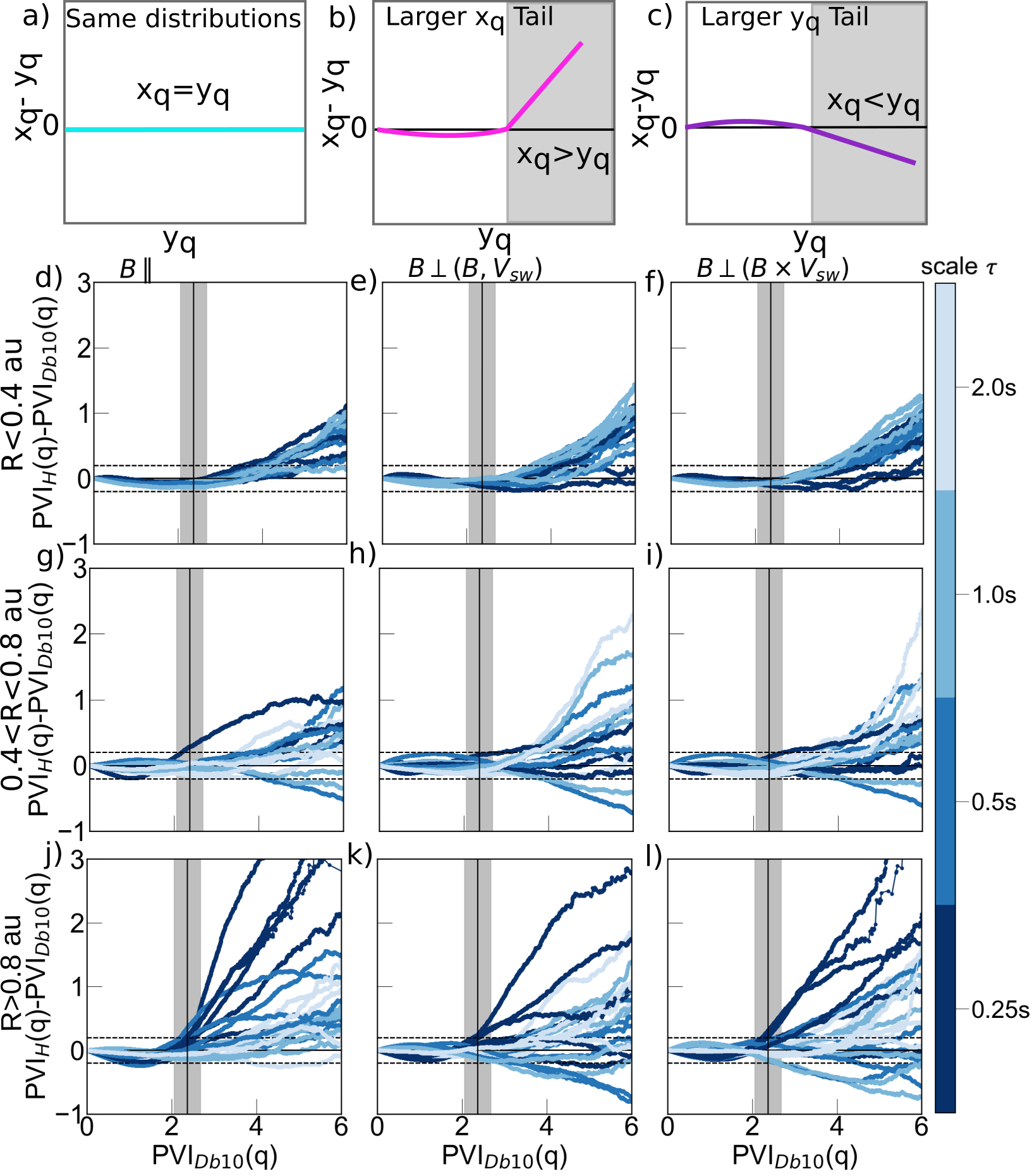MIST
Magnetosphere, Ionosphere and Solar-Terrestrial
Ubiquitous threshold for coherent structures in solar wind turbulence
By Alina Bendt (University of Warwick)
The solar wind may be heated by turbulence. Coherent structures which are one possible mediating mechanism of the turbulent cascade may dissipate energy. The partial variance increment (PVI) is routinely used to characterize and identify coherent structures. Previously the threshold beyond which fluctuations may be coherent structures was identified by comparisons to a Gaussian distribution. We compare wavelet decompositions with the Haar and 10th-order Daubechies wavelets to determine the threshold from the physical character of the fluctuations. These wavelets are sensitive to sharp changes and oscillations in the time series respectively. Comparisons of the fluctuation distributions obtained from these two wavelets reveal a core and tail., the latter is dominated by coherent structures. The transition from core to tail identifies the PVI threshold. This threshold coincides with the PVI value where the PVI distributions obtained from the Haar and Db10 wavelets start to depart from each other. We find a single value for the threshold in each the kinetic and inertial ranges. This threshold is independent of heliocentric distance and solar wind conditions. The detailed behaviour of the fluctuations above the threshold varies, reflecting different ways that turbulence develops with distance from the sun. This suggests an underlying mechanism governing these coherent structures that is the same regardless of the specific plasma conditions.

Compensated Quantile-Quantile (QQ) plots discriminate where the Haar (sharp changes) and Db10 (wave-packet) decomposed PVI fluctuation distributions diverge (gray shading) for all solar wind intervals in the kinetic range. The upper panels [(a)–(c)] illustrate the compensated QQ plots. [(d)–(j)] are compensated QQ plots in the kinetic range overplotted for all intervals. These are divided into three categories based on heliocentric distance, (i) 0.3 R < 0.4 au, (ii) 0.4 < R < 0.8 au, and (iii) R > 0.8 au (rows), shown for all magnetic field components (columns). The different scales τ are color coded from dark blue (0.25 s) to light blue (2 s). The overplotted PVI threshold of 2.2 (marked by a black vertical line) is the same for all panels, capturing where the Haar and Db10 derived PVI distributions diverge. The gray shaded region determined from the variance of the threshold ranges from 2.1 to 2.7. This threshold is independent of the scale τ of the turbulence and heliocentric distance. Dashed horizontal lines are at PVI ±0.2 for reference.
See publication for details:
Bendt & Chapman (2025) Ubiquitous threshold for coherent structures in solar wind turbulence, Phys. Rev. Research, doi:10.1103/PhysRevResearch.7.023176
Announcement of New MIST Councillors.
We are very pleased to announce the following members of the community have been elected unopposed to MIST Council:
- Rosie Johnson (Aberystwyth University), MIST Councillor
- Matthew Brown (University of Birmingham), MIST Councillor
- Chiara Lazzeri (MSSL, UCL), Student Representative
Rosie, Matthew, and Chiara will begin their terms in July. This will coincide with Jasmine Kaur Sandhu, Beatriz Sanchez-Cano, and Sophie Maguire outgoing as Councillors.
The current composition of Council can be found on our website, and this will be amended in July to reflect this announcement (https://www.mist.ac.uk/community/mist-council).
MIST PhD Studentships
This resource is a collation of PhD student adverts from the MIST Community.
Please note that the list is not exhaustive and is not intended to be an accurate capture of all studentships in the MIST community.
Please feel welcome to share and distribute this resource to any interested parties. Potential PhD applications should direct all enquiries about individual adverts to the named contact.
If you have any suggestions on how we can improve this resource, you can contact us as This email address is being protected from spambots. You need JavaScript enabled to view it..